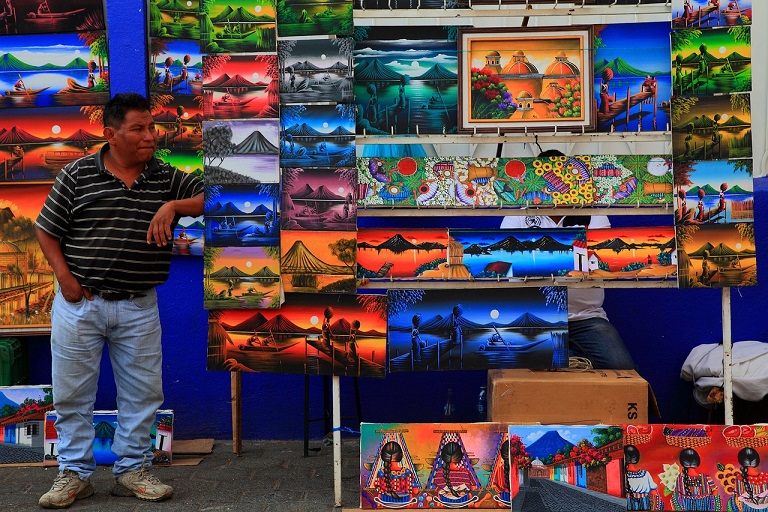The purpose is not to give a final and finished definition of the Latin American identity but to contribute to provide elements for its analysis and understanding. Every formally considered identity is an ontological category that affirms the permanence of being.
 Claudio Chipana Gutiérrez
Claudio Chipana Gutiérrez
But identity seen in a concrete and real way, for example if we speak of social and cultural identities, implies not only the similarities within oneself but also differences within a community, nation or state.
Boundaries in the world today become more flexible and on the other hand migrations are a major force in the changes that occur in individual and national identities.
Today it is no longer possible to speak of homogeneous identities. Paradoxical as it may be, for a better understanding of identity it is important to consider the differences. Otherwise, it would be difficult to explain the changes and transformations in cultural and national identities.
Our interest in affirming the importance of cultural difference is to refute the specialist and homogenizing ideas of identity. In other words, identity is not only composed of the similar traits that characterize a social or cultural entity but also of the differences and changes experienced by these entities over the course of time. Cultural differences constantly pierce traditional notions of nation, individual, or citizenship. Thus, it is possible to overcome the traditional but often exclusionary discourses of a nation, civilization or culture. It also allows for the inclusion of traditionally marginalized groups, such as minorities, women, blacks, indigenous people, etc.
 Identities are not mere reflections of reality, they express plans to fulfil the dreams of an individual and of a community. Identity is both being and desiring to be. Identity, in this way, is a constant recreation of individual and collective being. Recreation can occur in one’s own environment or in a foreign environment.
Identities are not mere reflections of reality, they express plans to fulfil the dreams of an individual and of a community. Identity is both being and desiring to be. Identity, in this way, is a constant recreation of individual and collective being. Recreation can occur in one’s own environment or in a foreign environment.
This entails the incorporation of the history of the formation and development of identities. For, without considering the temporal dimension, it is not possible to explain the dynamics of identity, its evolution and its changes. Without the time factor identity would be a fixed and formal quality. This makes the identities have a prospective aspect, in other word, they are referents of the future. Identity starts from the past with a projection into the future. The nation thus becomes a construction and reconstruction rather than an idea fixed beforehand, outside time. The past, therefore, is not a fixed dimension, but is in permanent revision. Our valuation of the past occurs through the prism of the present.
Emphasis in the past leads to a conservative identity. Emphasis placed on the future implies a transforming identity.
What is Latin American identity? What would be more suitable than an outdated definition is a criticism or an analysis of the different ways of understanding Latin American identity throughout its history.
In other words, a critical revision from the perspective of the present, from the current dilemmas facing the region under the name of Latin America.
 Identity is not a label or an inert concept, it is a vital force that impels us to the realization of an ideal and goes through encounters and disagreements, victories and defeats, advances and setbacks.
Identity is not a label or an inert concept, it is a vital force that impels us to the realization of an ideal and goes through encounters and disagreements, victories and defeats, advances and setbacks.
First of all, speaking of Latin American identity means taking the common history of all peoples and nations south of the Rio Bravo as a starting point. The Latin American identity, then, would reflect the common experiences of these peoples in different historical moments before and after the conquest, and especially since the Independence period. It also means taking into account the cultural elements that resemble these nations such as language, religious beliefs, culture, traditions, ethnicities, similar experiences of struggle, similar will to emancipation from all forms of external domination. In addition, similar problems such as the fight against poverty, backwardness, social rights, freedoms and democracy.
The Latin American identity is also made by migrants, namely diasporas. Latin American communities scattered throughout the world recreating national identities of origin but at the same time introducing new elements to the society of arrival and the society of origin.
Equally important to support the idea of a Latin American identity is the desire of the Latin American nations for regional integration based on social, economic and commercial goals of cooperation and mutual solidarity.
 But in any case, diversity is set aside. In other words, Latin American identity is defined by the dialectic of unity and diversity, by common historical and cultural features but also by local and national differences. A conception of identity that emphasizes only an isolated aspect of the relationship between Latin American nations, whether it is only the similarity or only the difference, does not contribute to finding a common goal, a common destiny and therefore a common identity of all the peoples and Nations that constitute this region.
But in any case, diversity is set aside. In other words, Latin American identity is defined by the dialectic of unity and diversity, by common historical and cultural features but also by local and national differences. A conception of identity that emphasizes only an isolated aspect of the relationship between Latin American nations, whether it is only the similarity or only the difference, does not contribute to finding a common goal, a common destiny and therefore a common identity of all the peoples and Nations that constitute this region.
Latin American identity is in a way a supra-national identity that many have metaphorically expressed in the phrase “Patria Grande” (Great Homeland).
Here are some categories to deepen the concept of cultural and national identity:
Representation and stereotype. Every identity needs to be represented. Some identities may have a privileged representation, others have a defective representation, or in other words, they are stereotyped and therefore subordinate. The media have greatly influenced the positive or negative representation of identities. Being represented means having a voice of your own and also having a political and gender representation. (See Spivak, “Can the Subaltern speak?”)
The language. Without a language, identity becomes incommunicable. In this way, identity becomes a narrative. Everyone participates in the writing of the nation, each from his own experience.
 There is an official narrative of the nation, but there are also marginal narratives that build the nation from the differences, from ‘the other’, for example the migrant. (Bhabha)
There is an official narrative of the nation, but there are also marginal narratives that build the nation from the differences, from ‘the other’, for example the migrant. (Bhabha)
Transcendence. Identities do not remain locked in themselves, they respond to the need to transcend temporally and spatially, to go beyond themselves. Identities are related to each other.
Power. Identities are inscribed in the relations of power, hegemony and subalternity between one identity and another. Identities or consciences engage in a struggle for recognition (Hegel). In an unequal society identities are also unequal. Hence it is important for identities to be empowered to achieve recognition and overcome marginalization and discrimination.
Reflection on the identity. Identity can be a conscious and reflective attitude, an awakening of being a realization of who we are. Without a reflection of identity, the recovery or strengthening of identity is not possible.
Culture. Culture is essential in the formation of identity, every culture has its own identity, and in turn, identity is expressible through culture. Culture is the way identity is revealed.
Recognition. Recognition is fundamental to identity, to its inclusion and participation as an active and non-passive entity, not as a dominated but a self-owned being.
Ambivalence. Identity often lacks clear outlines.
 Miscegenation and new identities arise from the mixing. Borders become more porous, it is more difficult to conceive closed identities. Identities are hybridized.
Miscegenation and new identities arise from the mixing. Borders become more porous, it is more difficult to conceive closed identities. Identities are hybridized.
The praxis of identity. Identity is not only conceptual, it is mainly practice. It is a daily political, cultural and social activity, and is constantly acquiring new dimensions.
Next Edition: Globalization and Identities
(Translated by Shanika Whight – shanikawhight@hotmail.co.uk) – Photos: Pixabay –












.jpg)












